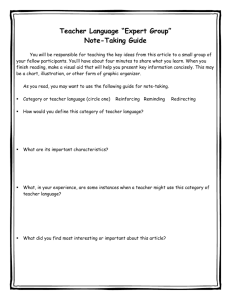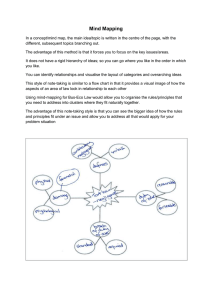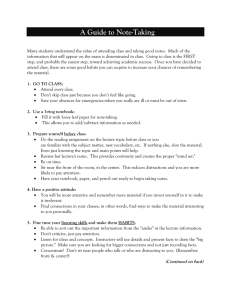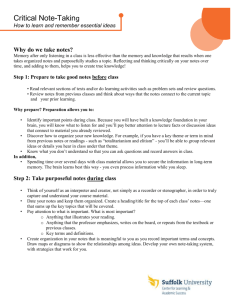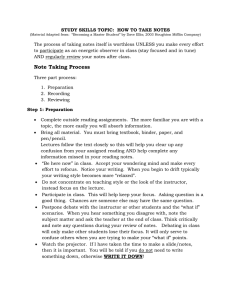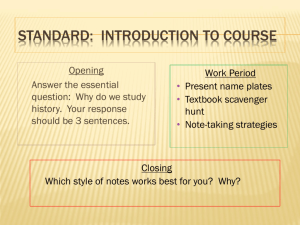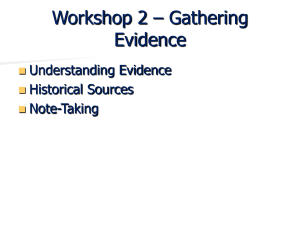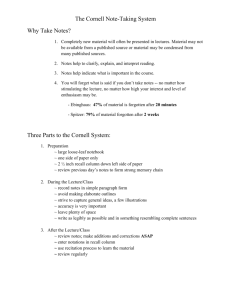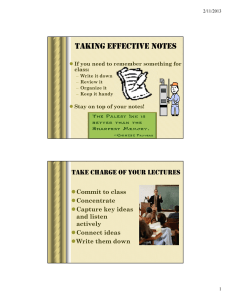Reading & Note
advertisement
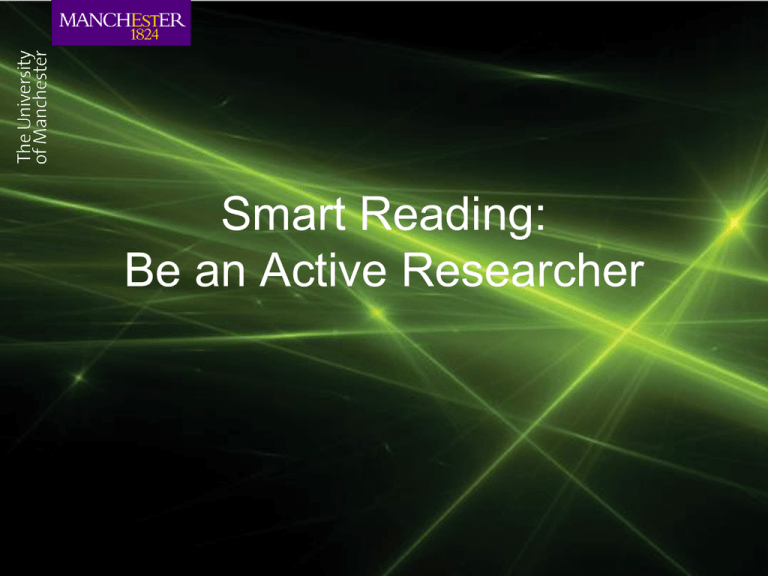
Smart Reading: Be an Active Researcher If there’s just one question you ask yourself before opening a book, listening to a podcast, reading a journal article, (or looking at any other resources for your research)… …make sure it’s… …why am I doing this? Why am I doing this? • Asking this question is not meant to provoke profound philosophical reflection on the ultimate purpose of your actions! • But you should aim to be conscious of a number of factors that can guide you in your research. This awareness will help you to gain the most from the time and energy you put into your research Some possible responses… Explore topic; collect ideas/ inspiration Identify research questions Understand main ideas and arguments Critique key ideas and arguments Reread for writing up Factors that will affect your approach to reading & note-taking Your aims Level of detail required Your focus Factors to consider What you already know Time available What you need to find out Why ask why? Your response might influence: • the level of detail you look for in the text • whether you decide to skip certain sections • the quantity and type of notes you take • the depth or level of detail of notes you take • whether you decide to follow up references used by the writer (pointers to further resources could, in fact, be the main thing you are looking for) • …? Bring a book! What you need • A book that relates to your project – such as a textbook or academic book with several distinct chapters or sections Bring a Book Activity 1: Quick question • With the book closed on the desk, ask yourself Why am I looking at this book? • Tell the person next to you what you thought Bring a Book Activity 2: Flick! • Have a quick flick through every page of the book, including the contents and index (you may want to do both of these before flicking through the body text) Your aim is to gain a structural overview of the book and what it’s about Activity 3: Bookmark • Go back through your text, mark pages or sections that you’d like to revisit with post-it notes or small pieces of paper Reading & Note-taking • Active reading will often go hand in hand with taking notes • Appropriate note-taking can help you to understand and retain information • But it isn’t a matter of writing down everything… be… > selective > relevant > organised • Think: easy to make & easy to use Note taking Abbreviate and paraphrase Keep your title question or subquestion in mind Consider using a mindmap Note down reference & page number details Find your inner critic Criticism can be positive as well as negative! • Do you agree with the writer? • Do you feel that certain points merit more research on your part? • Do you want to ask questions of the text (e.g. you want more evidence, other points of view) • Are there other problems with the text? Activity 4: Practice note taking • Turn to one of the sections or passages you have just bookmarked • Read it through once • Now read it again, pausing to take notes as appropriate – use your worksheet for suggestions as to what it might be good to write down • You probably won’t want to cover all the points suggested • Remember that the note-taking process is really valuable as it helps you to reflect on what you read What the book says Your thoughts •Main points •Key arguments •Interesting / new / unusual / controversial ideas •Themes or major concepts discussed •Questions asked or left unanswered •Other people referred to •Why you (don’t) agree with the author •Points you don’t understand •Points you want to find out more about •References you want to follow up •Questions or ideas the text provokes for you •Anything that is wrong or missing A final reminder • Never open a book, or indeed engage with any resource for your research, without first asking yourself... …why am I doing this?
